-
 Bitcoin
Bitcoin $106,754.6083
1.33% -
 Ethereum
Ethereum $2,625.8249
3.80% -
 Tether USDt
Tether USDt $1.0001
-0.03% -
 XRP
XRP $2.1891
1.67% -
 BNB
BNB $654.5220
0.66% -
 Solana
Solana $156.9428
7.28% -
 USDC
USDC $0.9998
0.00% -
 Dogecoin
Dogecoin $0.1780
1.14% -
 TRON
TRON $0.2706
-0.16% -
 Cardano
Cardano $0.6470
2.77% -
 Hyperliquid
Hyperliquid $44.6467
10.24% -
 Sui
Sui $3.1128
3.86% -
 Bitcoin Cash
Bitcoin Cash $455.7646
3.00% -
 Chainlink
Chainlink $13.6858
4.08% -
 UNUS SED LEO
UNUS SED LEO $9.2682
0.21% -
 Avalanche
Avalanche $19.7433
3.79% -
 Stellar
Stellar $0.2616
1.64% -
 Toncoin
Toncoin $3.0222
2.19% -
 Shiba Inu
Shiba Inu $0.0...01220
1.49% -
 Hedera
Hedera $0.1580
2.75% -
 Litecoin
Litecoin $87.4964
2.29% -
 Polkadot
Polkadot $3.8958
3.05% -
 Ethena USDe
Ethena USDe $1.0000
-0.04% -
 Monero
Monero $317.2263
0.26% -
 Bitget Token
Bitget Token $4.5985
1.68% -
 Dai
Dai $0.9999
0.00% -
 Pepe
Pepe $0.0...01140
2.44% -
 Uniswap
Uniswap $7.6065
5.29% -
 Pi
Pi $0.6042
-2.00% -
 Aave
Aave $289.6343
6.02%
How long will it take for the gap to be filled? Which gaps must be filled?
Gaps in crypto trading signal potential support/resistance levels, with common and exhaustion gaps more likely to be filled depending on volume, volatility, and market sentiment.
Jun 15, 2025 at 11:14 am
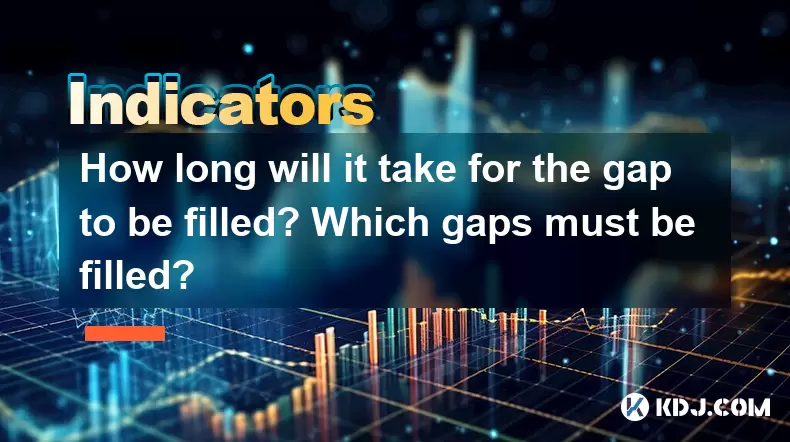
Understanding the Concept of Gaps in Cryptocurrency Trading
In the world of cryptocurrency trading, gaps refer to price levels at which no trading activity has occurred. These gaps appear on price charts when the price of an asset jumps from one level to another without any trades happening in between. This phenomenon is especially common in markets that operate 24/7, like crypto, due to sudden news events or changes in market sentiment during off-peak hours.
Gaps are significant because they often represent areas of strong support or resistance. Traders monitor these gaps to anticipate future price movements. When a gap is filled, it means the price has returned to the level where the gap initially formed, closing it visually on the chart.
How Long Will It Take for the Gap to Be Filled?
The time it takes for a gap to be filled depends heavily on several factors including market volatility, trading volume, and overall market sentiment. In highly volatile cryptocurrencies like Bitcoin (BTC) or Ethereum (ETH), gaps may close within hours if there's enough momentum pushing the price back to the original level.
However, for smaller-cap altcoins or during periods of low liquidity, gaps can remain unfilled for days or even weeks. There’s no fixed timeline, but historical data shows that most common gaps—those not associated with major news—are usually filled relatively quickly.
Traders should pay attention to volume patterns around the gap area. If high volume returns near the gap zone, it increases the likelihood of the gap being filled soon. Conversely, low volume suggests hesitation, and the gap may persist longer than expected.
Which Gaps Must Be Filled?
Not all gaps are created equal. Understanding which types of gaps are more likely to be filled helps traders make informed decisions. The main categories include:
- Common gaps: These occur frequently and are usually filled quickly as part of normal price movement.
- Breakaway gaps: These signal the start of a new trend and are less likely to be filled since they indicate strong directional movement.
- Runaway gaps: Also known as measuring gaps, these appear mid-trend and typically do not get filled unless the trend reverses significantly.
- Exhaustion gaps: These form near the end of a trend and are often followed by a reversal, making them more likely to be filled shortly after formation.
Among these, common gaps and exhaustion gaps have the highest probability of being filled. Recognizing which type you're dealing with requires analyzing candlestick patterns, volume, and trend strength.
Identifying Gaps on Price Charts
To spot a gap, traders must examine candlestick charts closely. A gap appears when the low of an upward candle is higher than the high of the previous candle, or vice versa for a downward gap.
Using tools such as TradingView or Binance's native charting platform, zoom into daily or hourly charts to detect these anomalies. Look for abrupt jumps in price with little or no wicks connecting the candles. Some platforms also offer built-in indicators that highlight gaps automatically.
It's essential to differentiate between real gaps and extended wicks. Real gaps occur when there's no overlap between the current candle and the prior one, while long wicks are just signs of temporary volatility and not actual gaps.
Strategies to Trade Gaps in Crypto Markets
Once a gap is identified, traders can develop strategies based on whether they expect it to be filled or not. Here’s how seasoned traders approach this:
- Gap-filling strategy: Enter a trade once the price approaches the gap zone. For example, if a bullish gap forms and the price pulls back toward it, some traders go long expecting the gap to hold as support.
- Gap continuation strategy: If a breakaway or runaway gap occurs, traders may follow the trend, anticipating further movement in the same direction.
- Volume confirmation: Always check volume levels before entering a trade. High volume near the gap zone confirms interest and increases the chance of fulfillment.
- Stop-loss placement: Place stop-loss orders just below the gap level in case of false signals or sudden reversals.
These strategies work best when combined with other technical indicators like moving averages, RSI, or Fibonacci retracements to confirm potential entries and exits.
Monitoring Market Conditions Around Gaps
Market conditions play a critical role in determining whether a gap will be filled. Key aspects to monitor include:
- News and announcements: Major regulatory updates, exchange listings, or macroeconomic developments can delay or accelerate gap fills.
- Liquidity levels: Low liquidity environments, such as weekends or holidays, may cause gaps to persist longer than usual.
- Market sentiment: Use sentiment analysis tools or social media tracking to gauge whether the community is bullish or bearish on a particular coin.
- Exchange-specific gaps: Sometimes, gaps only appear on certain exchanges due to low trading activity, so cross-check multiple platforms for accuracy.
By staying updated on these factors, traders can better assess the likelihood and timing of a gap being filled.
Frequently Asked Questions
What causes gaps to form in cryptocurrency charts?
Gaps form primarily due to sudden shifts in supply and demand, often triggered by news events, whale movements, or rapid changes in investor sentiment. Since crypto markets never close, unexpected events outside regular trading hours can lead to significant price jumps when the market reopens.
Can I rely solely on gap analysis for trading decisions?
While gap analysis is useful, it should not be used in isolation. Combining it with volume analysis, candlestick patterns, and broader market trends provides a more comprehensive view and reduces the risk of false signals.
Are gaps more common in certain cryptocurrencies?
Yes, highly volatile coins tend to exhibit more frequent and pronounced gaps compared to stablecoins or large-cap assets. Altcoins with lower liquidity are particularly prone to gapping due to thinner order books and sporadic trading activity.
Is every gap guaranteed to be filled eventually?
No, not all gaps get filled. Breakaway and runaway gaps, especially those driven by strong fundamentals or adoption news, may never be revisited by price. Exhaustion and common gaps, however, have a higher probability of closure.
Disclaimer:info@kdj.com
The information provided is not trading advice. kdj.com does not assume any responsibility for any investments made based on the information provided in this article. Cryptocurrencies are highly volatile and it is highly recommended that you invest with caution after thorough research!
If you believe that the content used on this website infringes your copyright, please contact us immediately (info@kdj.com) and we will delete it promptly.
- 2025-W Uncirculated American Gold Eagle and Dr. Vera Rubin Quarter Mark New Products
- 2025-06-13 06:25:13
- Ruvi AI (RVU) Leverages Blockchain and Artificial Intelligence to Disrupt Marketing, Entertainment, and Finance
- 2025-06-13 07:05:12
- H100 Group AB Raises 101 Million SEK (Approximately $10.6 Million) to Bolster Bitcoin Reserves
- 2025-06-13 06:25:13
- Galaxy Digital CEO Mike Novogratz Says Bitcoin Will Replace Gold and Go to $1,000,000
- 2025-06-13 06:45:13
- Trust Wallet Token (TWT) Price Drops 5.7% as RWA Integration Plans Ignite Excitement
- 2025-06-13 06:45:13
- Ethereum (ETH) Is in the Second Phase of a Three-Stage Market Cycle
- 2025-06-13 07:25:13
Related knowledge
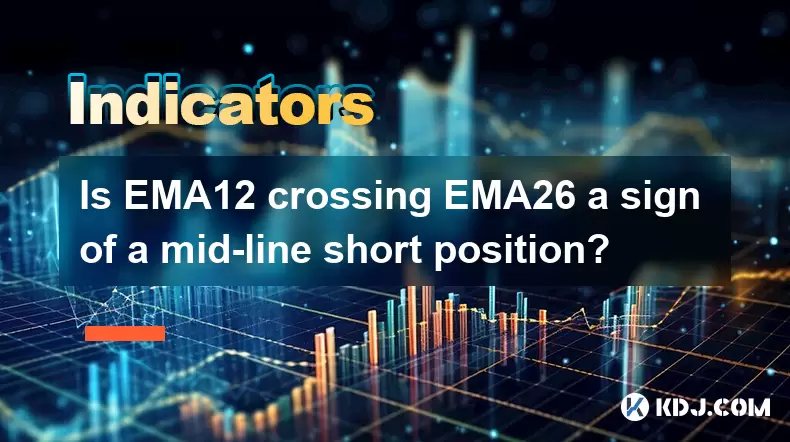
Is EMA12 crossing EMA26 a sign of a mid-line short position?
Jun 16,2025 at 07:22pm
Understanding EMA12 and EMA26 in Cryptocurrency TradingIn the world of cryptocurrency trading, Exponential Moving Averages (EMAs) are widely used tools for analyzing price trends. Specifically, the EMA12 and EMA26 are two of the most commonly referenced EMAs among traders. The EMA12 represents a short-term moving average calculated over the past 12 time...
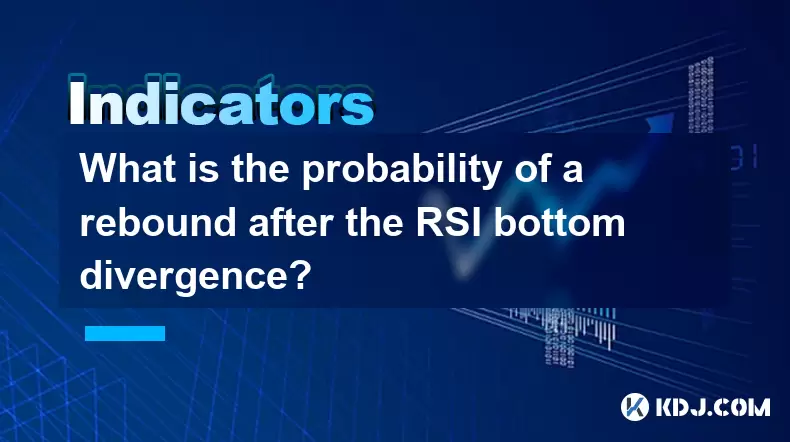
What is the probability of a rebound after the RSI bottom divergence?
Jun 16,2025 at 06:50pm
Understanding RSI Bottom Divergence in Cryptocurrency TradingThe Relative Strength Index (RSI) is a widely used momentum oscillator in technical analysis, particularly within the cryptocurrency market. It helps traders identify overbought or oversold conditions and potential reversal points. A bottom divergence occurs when the price of an asset makes a ...
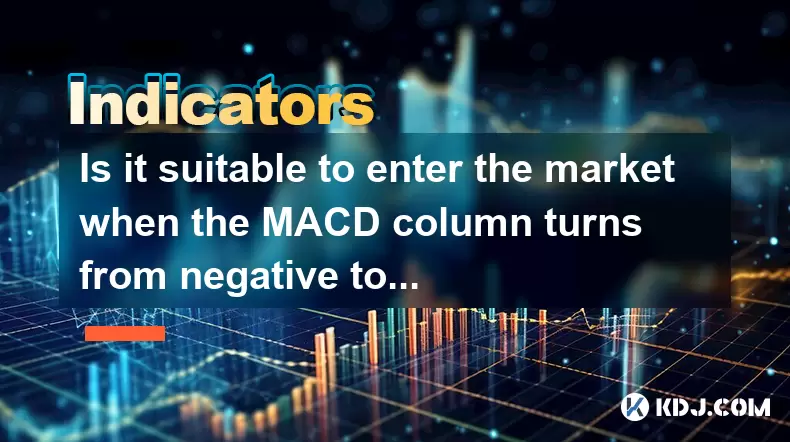
Is it suitable to enter the market when the MACD column turns from negative to positive?
Jun 16,2025 at 06:07pm
Understanding the MACD IndicatorThe Moving Average Convergence Divergence (MACD) is a widely used technical analysis tool in cryptocurrency trading. It consists of three main components: the MACD line, the signal line, and the MACD histogram (often referred to as the MACD column). The MACD line is calculated by subtracting the 26-period Exponential Movi...
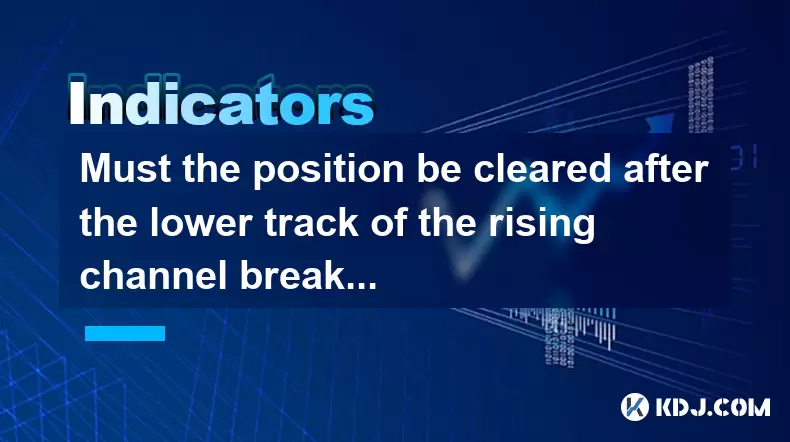
Must the position be cleared after the lower track of the rising channel breaks?
Jun 16,2025 at 04:43pm
Understanding the Rising Channel BreakdownIn technical analysis, a rising channel is formed by drawing two parallel trendlines: one connecting higher lows and another connecting higher highs. When the price breaks below the lower trendline of this channel, it signals a potential reversal or at least a pause in the uptrend. This event often triggers trad...
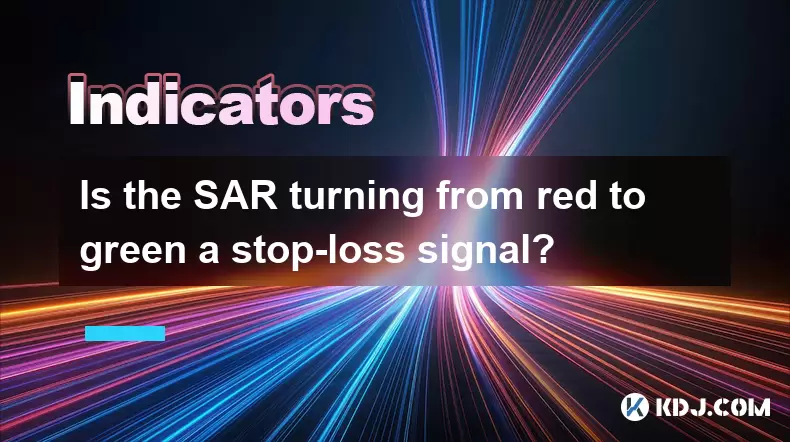
Is the SAR turning from red to green a stop-loss signal?
Jun 16,2025 at 07:07pm
Understanding SAR in Cryptocurrency TradingThe Parabolic SAR (Stop and Reverse) is a technical indicator widely used in cryptocurrency trading to identify potential reversals in price movement. It appears as a series of dots either above or below the asset's price chart. When the dots shift from one side of the price to the other, it signals a reversal....
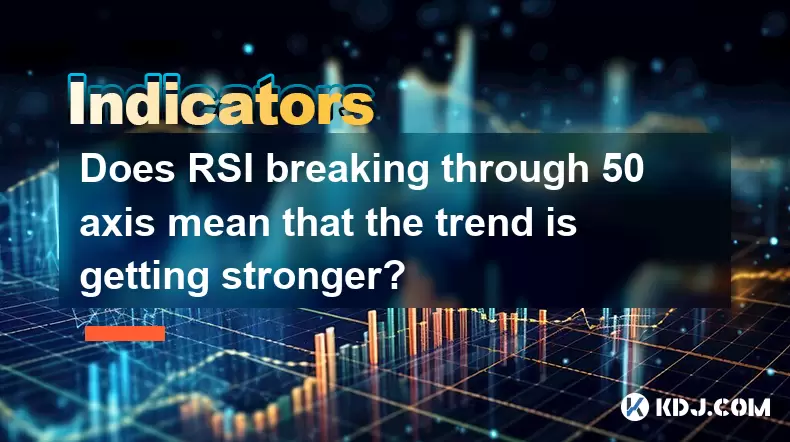
Does RSI breaking through 50 axis mean that the trend is getting stronger?
Jun 16,2025 at 06:35pm
Understanding the RSI Indicator and Its Role in Cryptocurrency TradingThe Relative Strength Index (RSI) is a momentum oscillator widely used in technical analysis to measure the speed and change of price movements. In the cryptocurrency market, where volatility is high and trends can shift rapidly, understanding RSI levels becomes crucial for traders. T...

Is EMA12 crossing EMA26 a sign of a mid-line short position?
Jun 16,2025 at 07:22pm
Understanding EMA12 and EMA26 in Cryptocurrency TradingIn the world of cryptocurrency trading, Exponential Moving Averages (EMAs) are widely used tools for analyzing price trends. Specifically, the EMA12 and EMA26 are two of the most commonly referenced EMAs among traders. The EMA12 represents a short-term moving average calculated over the past 12 time...

What is the probability of a rebound after the RSI bottom divergence?
Jun 16,2025 at 06:50pm
Understanding RSI Bottom Divergence in Cryptocurrency TradingThe Relative Strength Index (RSI) is a widely used momentum oscillator in technical analysis, particularly within the cryptocurrency market. It helps traders identify overbought or oversold conditions and potential reversal points. A bottom divergence occurs when the price of an asset makes a ...

Is it suitable to enter the market when the MACD column turns from negative to positive?
Jun 16,2025 at 06:07pm
Understanding the MACD IndicatorThe Moving Average Convergence Divergence (MACD) is a widely used technical analysis tool in cryptocurrency trading. It consists of three main components: the MACD line, the signal line, and the MACD histogram (often referred to as the MACD column). The MACD line is calculated by subtracting the 26-period Exponential Movi...

Must the position be cleared after the lower track of the rising channel breaks?
Jun 16,2025 at 04:43pm
Understanding the Rising Channel BreakdownIn technical analysis, a rising channel is formed by drawing two parallel trendlines: one connecting higher lows and another connecting higher highs. When the price breaks below the lower trendline of this channel, it signals a potential reversal or at least a pause in the uptrend. This event often triggers trad...

Is the SAR turning from red to green a stop-loss signal?
Jun 16,2025 at 07:07pm
Understanding SAR in Cryptocurrency TradingThe Parabolic SAR (Stop and Reverse) is a technical indicator widely used in cryptocurrency trading to identify potential reversals in price movement. It appears as a series of dots either above or below the asset's price chart. When the dots shift from one side of the price to the other, it signals a reversal....

Does RSI breaking through 50 axis mean that the trend is getting stronger?
Jun 16,2025 at 06:35pm
Understanding the RSI Indicator and Its Role in Cryptocurrency TradingThe Relative Strength Index (RSI) is a momentum oscillator widely used in technical analysis to measure the speed and change of price movements. In the cryptocurrency market, where volatility is high and trends can shift rapidly, understanding RSI levels becomes crucial for traders. T...
See all articles

























































































